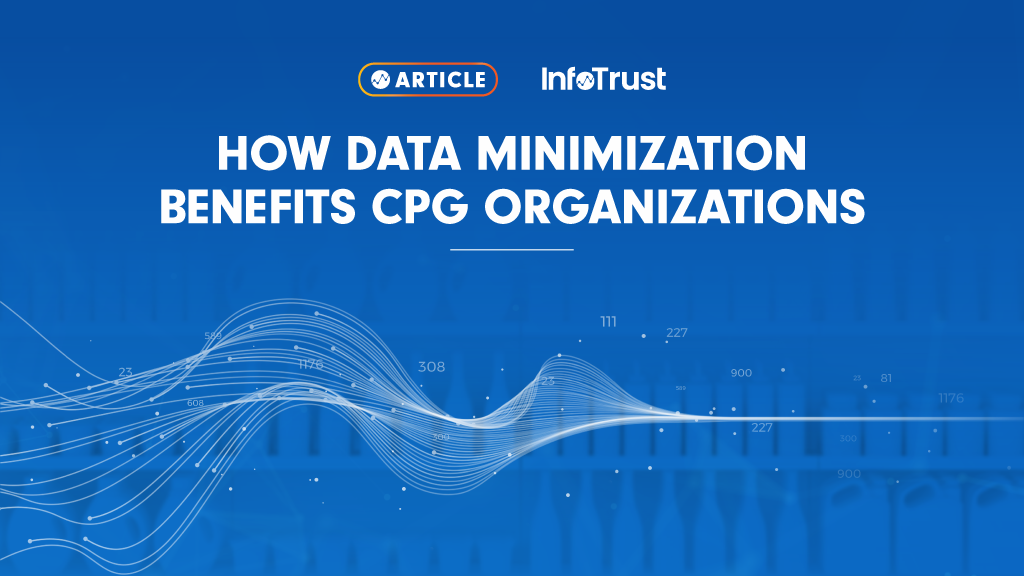It seems almost paradoxical: you can spend less money maintaining your data collection framework, reduce your compliance risk, and improve the quality of your data. Does this all sound too good to be true? I’ll show how the principles of data minimization demonstrate otherwise and can help your organization.
What is data minimization?
Data minimization is a key principle in data privacy and security that involves limiting your data collection to only what is necessary for a specific purpose. This principle should also be applied to implementations of Google Analytics—doing so can save you both time and money.
The data minimization term was popularized by the European Data Protection Supervisor. They describe it as follows:
The principle of “data minimisation” means that a data controller should limit the collection of personal information to what is directly relevant and necessary to accomplish a specified purpose. They should also retain the data only for as long as is necessary to fulfill that purpose. In other words, data controllers should collect only the personal data they really need, and should keep it only for as long as they need it.
This concept should be the starting point for any modern, flexible data collection strategy.
So how does this save me money?
Collecting huge volumes of data sounds appealing at first. Because we all know that knowledge is power, right? The more information you have available, the better is your ability to make sound decisions from it, correct?
The issue is that extensive data collection comes with significant costs. First, you have to define and strategize about what data to collect. This is a critical step regardless of your approach but the more you are collecting, the more time and resources it takes to plan out.
Next, you have to implement your data collection framework. This can add significant time in web development to configure your sites to pass the necessary information and the time of digital analysts to collect, parse, and send the data to your collection endpoints.
Finally, you have to maintain your complicated data framework. The more customized and convoluted it is, the more money you will spend maintaining it and adapting it to future site changes, new functionality, new data points, etc. Complexity does not easily scale and scalability is critical to CPG companies.
We haven’t even accounted for the costs of storing and analyzing this data. We’ll touch on some of those concepts later.
So how does this improve the quality of my data?
Let’s be clear about something: collecting less data does not magically improve the quality of the data you are collecting. What it can do, however, is improve the average quality of your data.
If you are collecting copious amounts of data, a lot of it is—frankly—worthless to your analysis. We all have seen tracking implemented that has no real business value and is not used to make any actionable decisions. All it does is add noise to your reporting and analysis.
By ensuring that you are collecting the most impactful data points (let’s remember that guidance from the EDPS to collect only “what is directly relevant and necessary to accomplish a specified purpose”) you strengthen the average value and quality of your dataset so that you can spend less time sifting through it and more timing acting on it. Your first-party data from fully consenting users is your strongest and most actionable data. Put it to good use!
As noted in the previous section, this can amount to significant cost savings in the storage and analysis of the data, as well as improve the quality of data you use in your audiences and ad campaigns.
I’m still not convinced.
We get it. For those of us who cut our teeth in the early era of digital analytics at the turn of the century, it can be hard to let go of the desire to collect as much information as possible.
If the previous arguments weren’t enough to sway you, consider this: I doubt there is anyone reading this post who expects there to be less governmental regulation and less oversight of data collection in five years than today.
We don’t know what the future holds but we do know which way the arrow is pointing and if you are not following the best practices of data minimization, you are not just exposing yourself (and more importantly, your customers) to compliance risk today but even more so in the future.
But if you set up a strong and resilient tracking strategy that offers transparency and trust to your users, you will be able to easily adapt to any upcoming regulatory changes.
The principles of data minimization will be just as salient and true in five years as today and must be the starting point of any data collection strategy.



